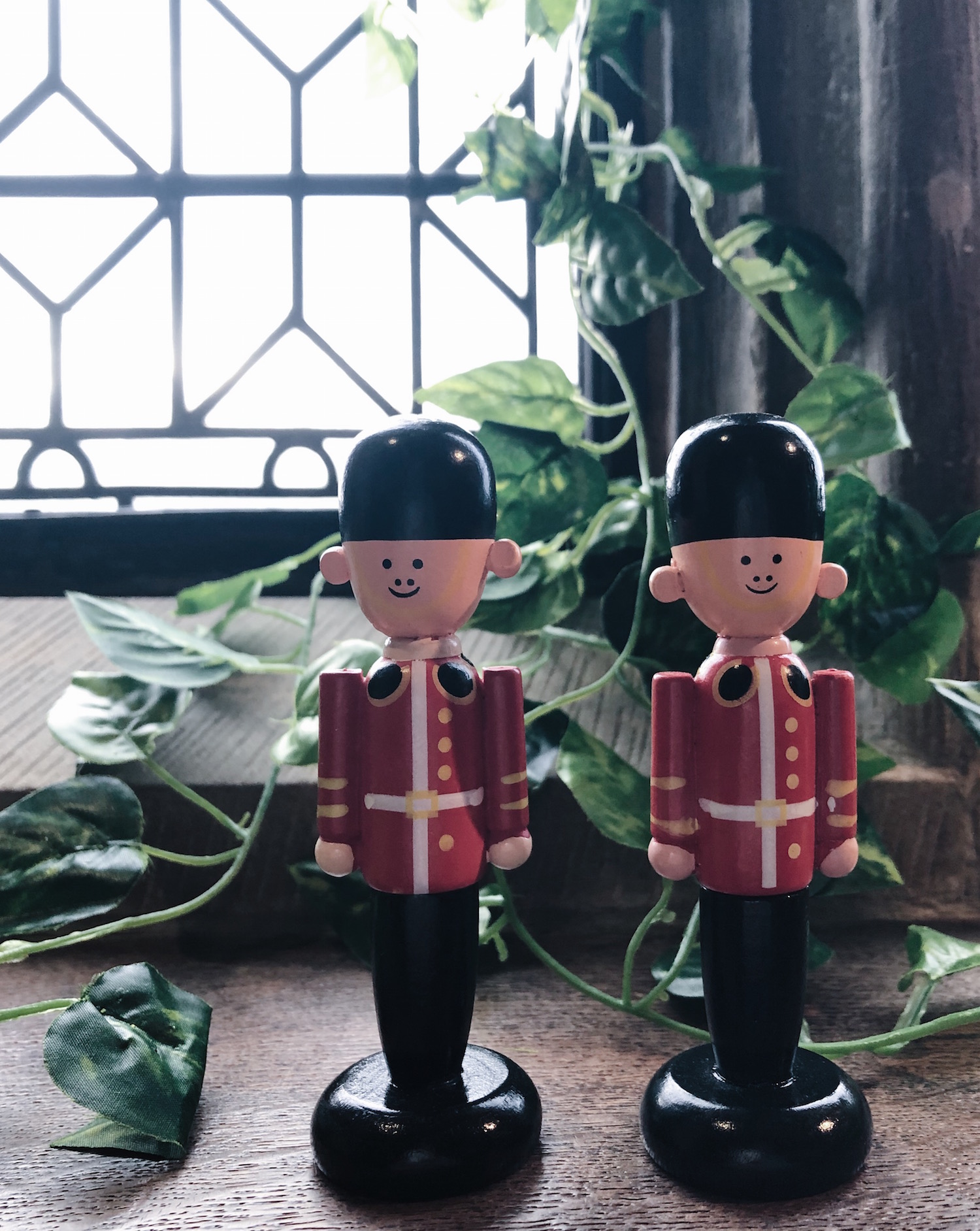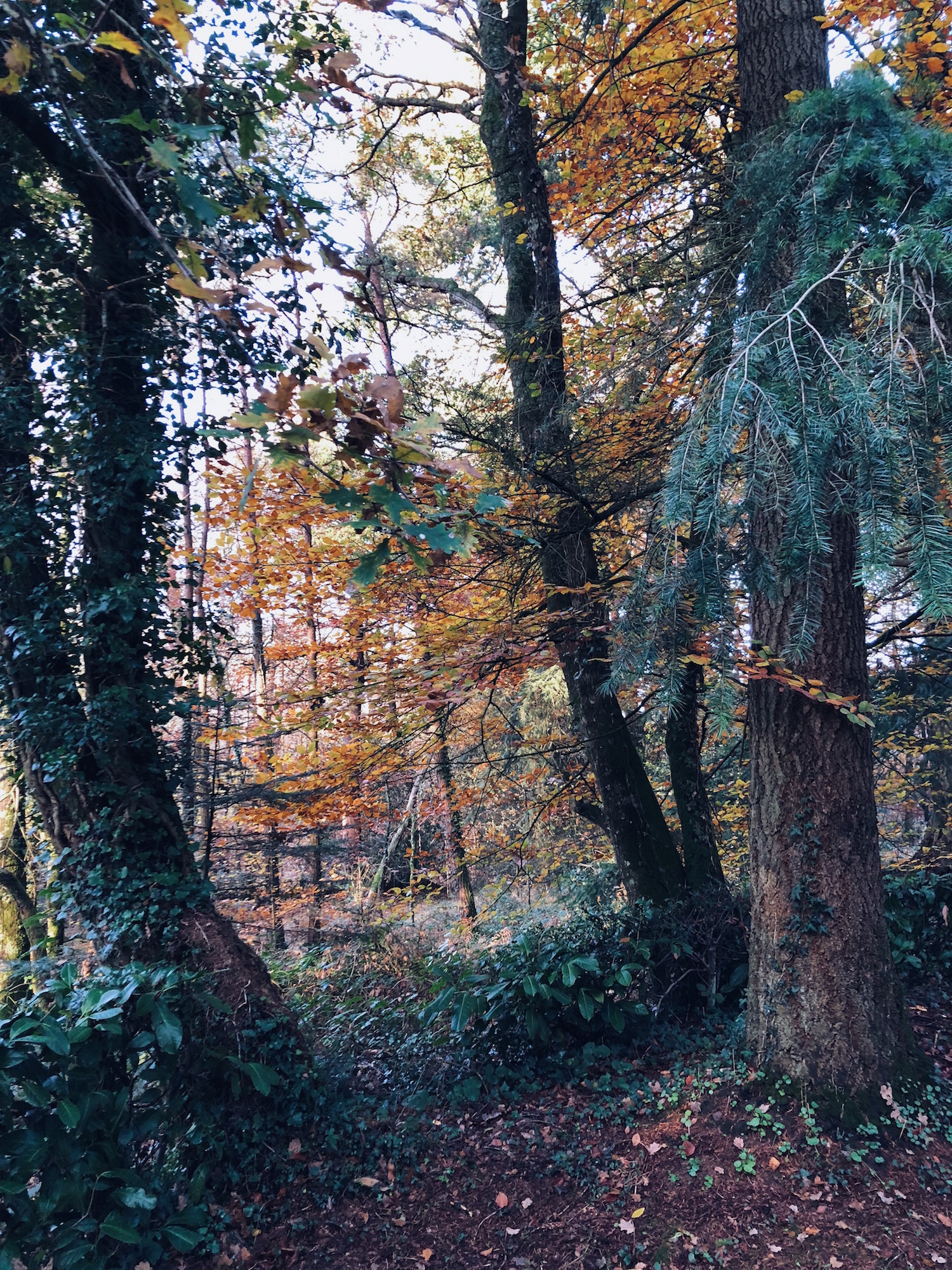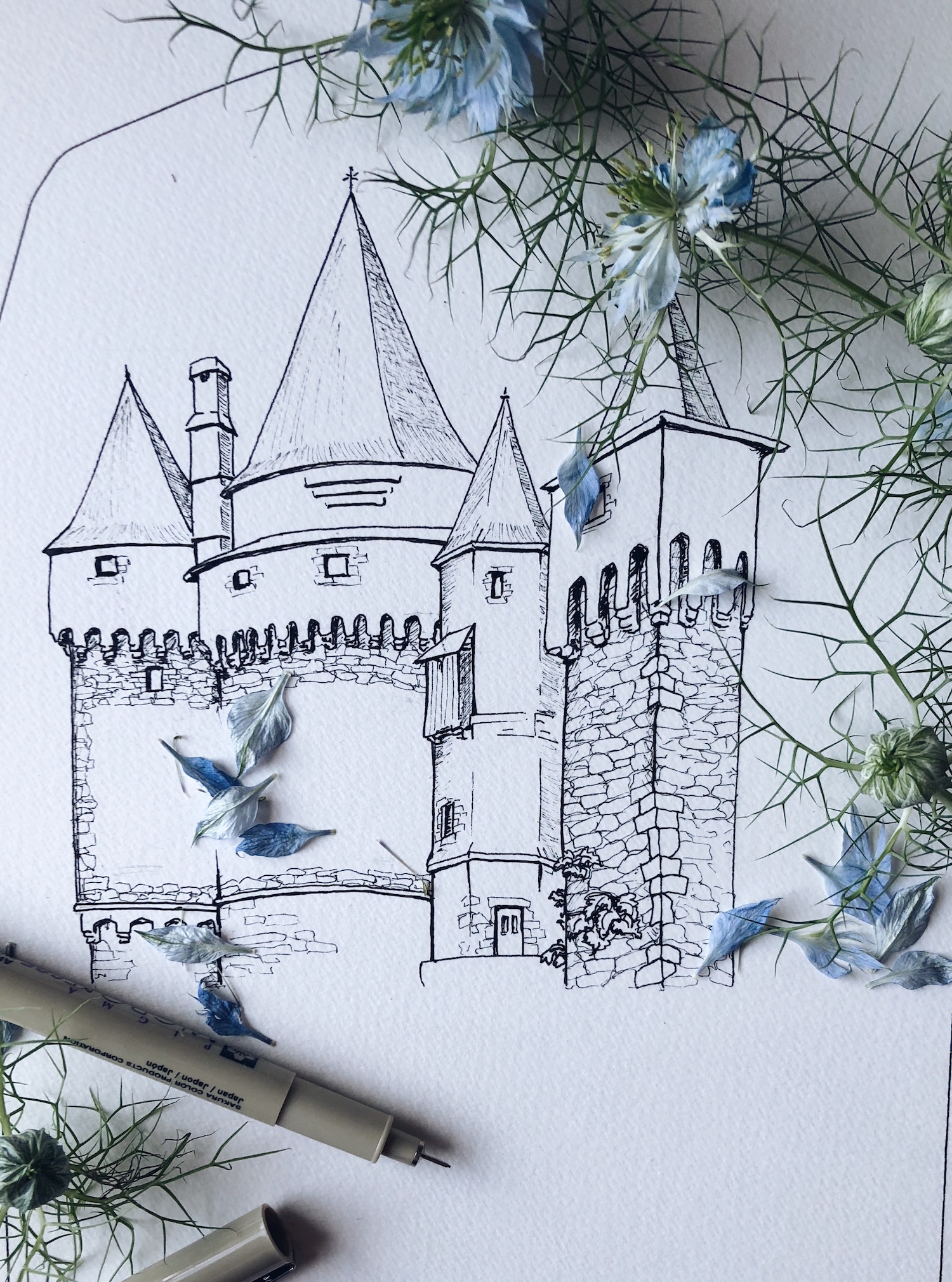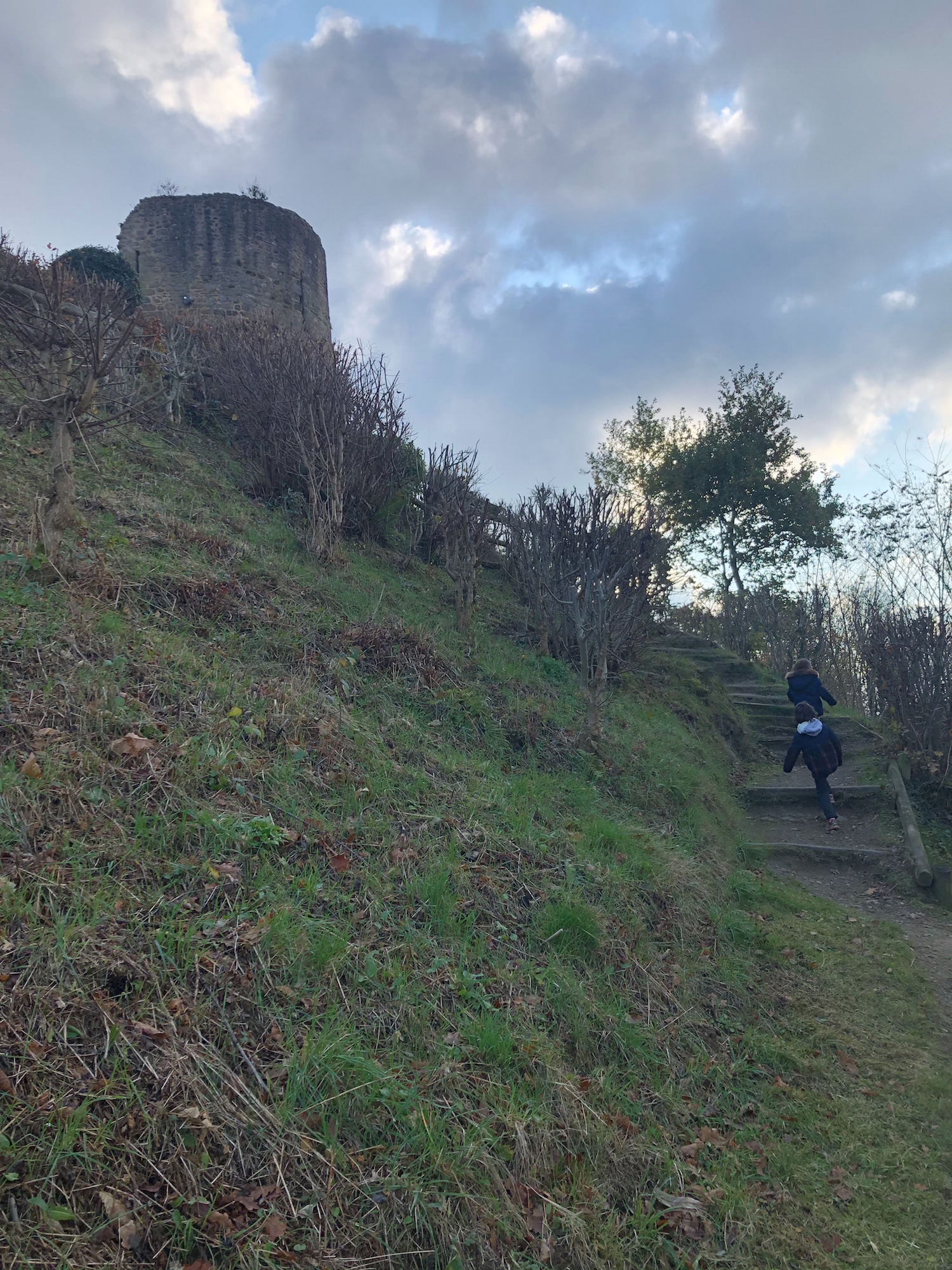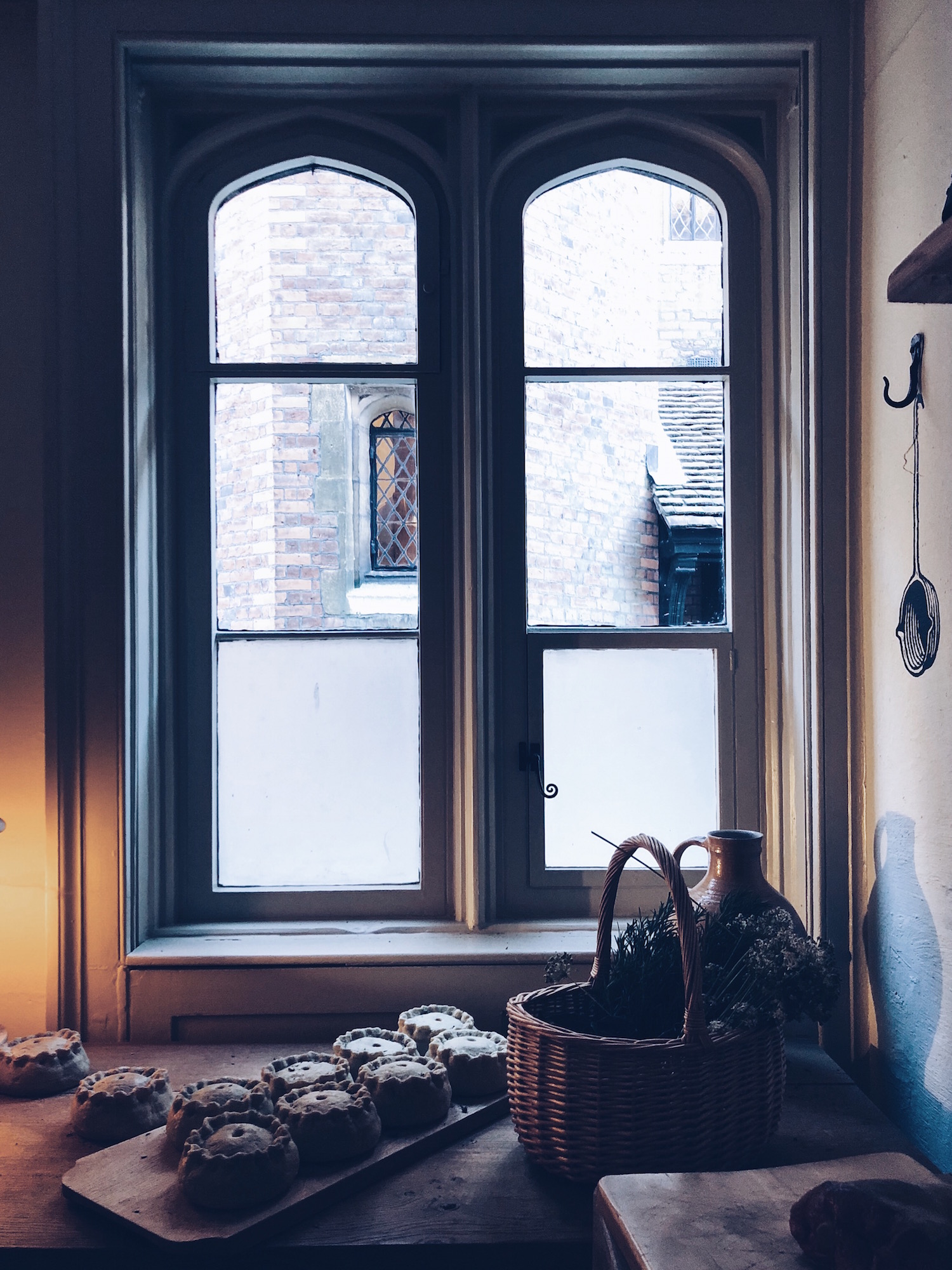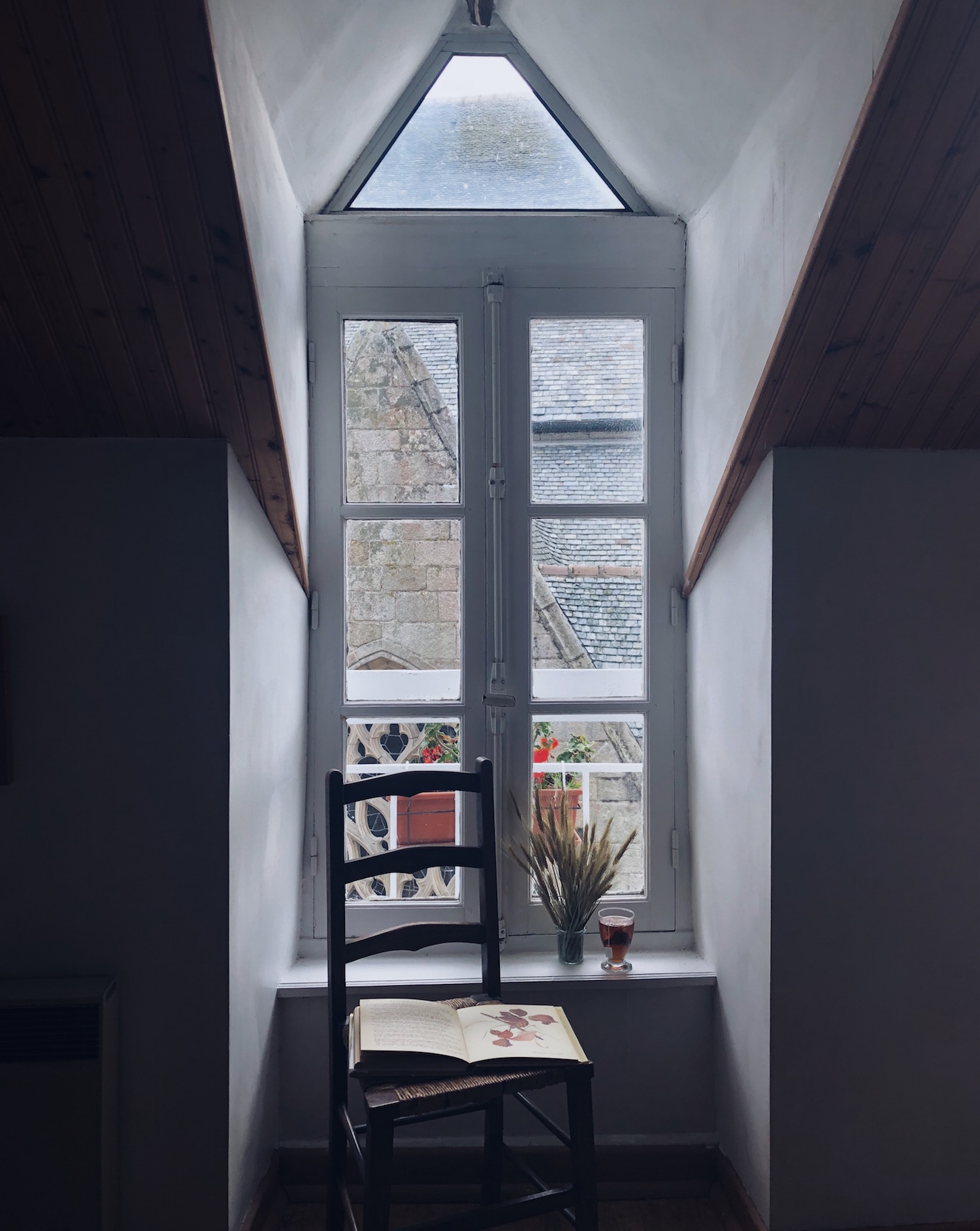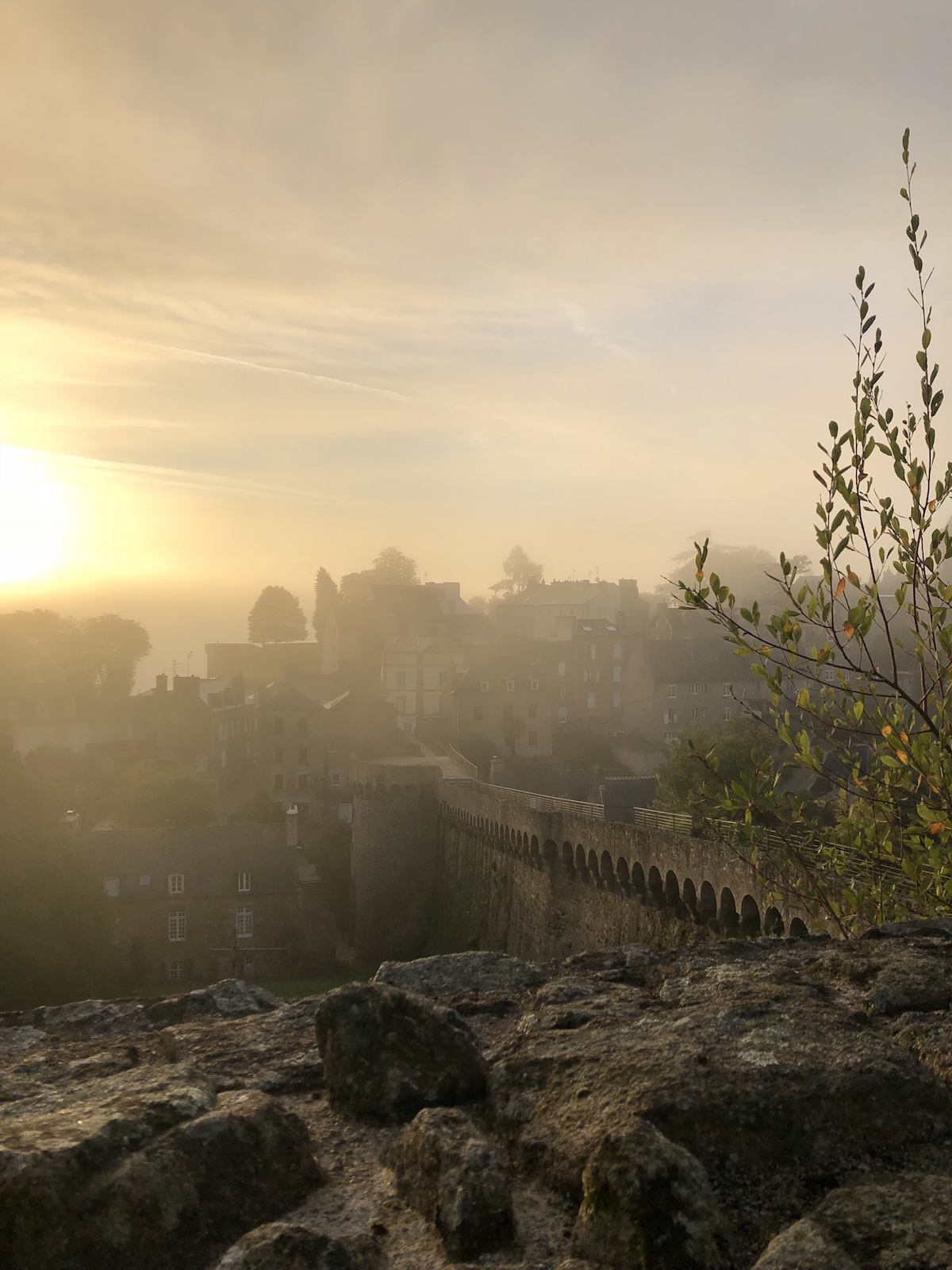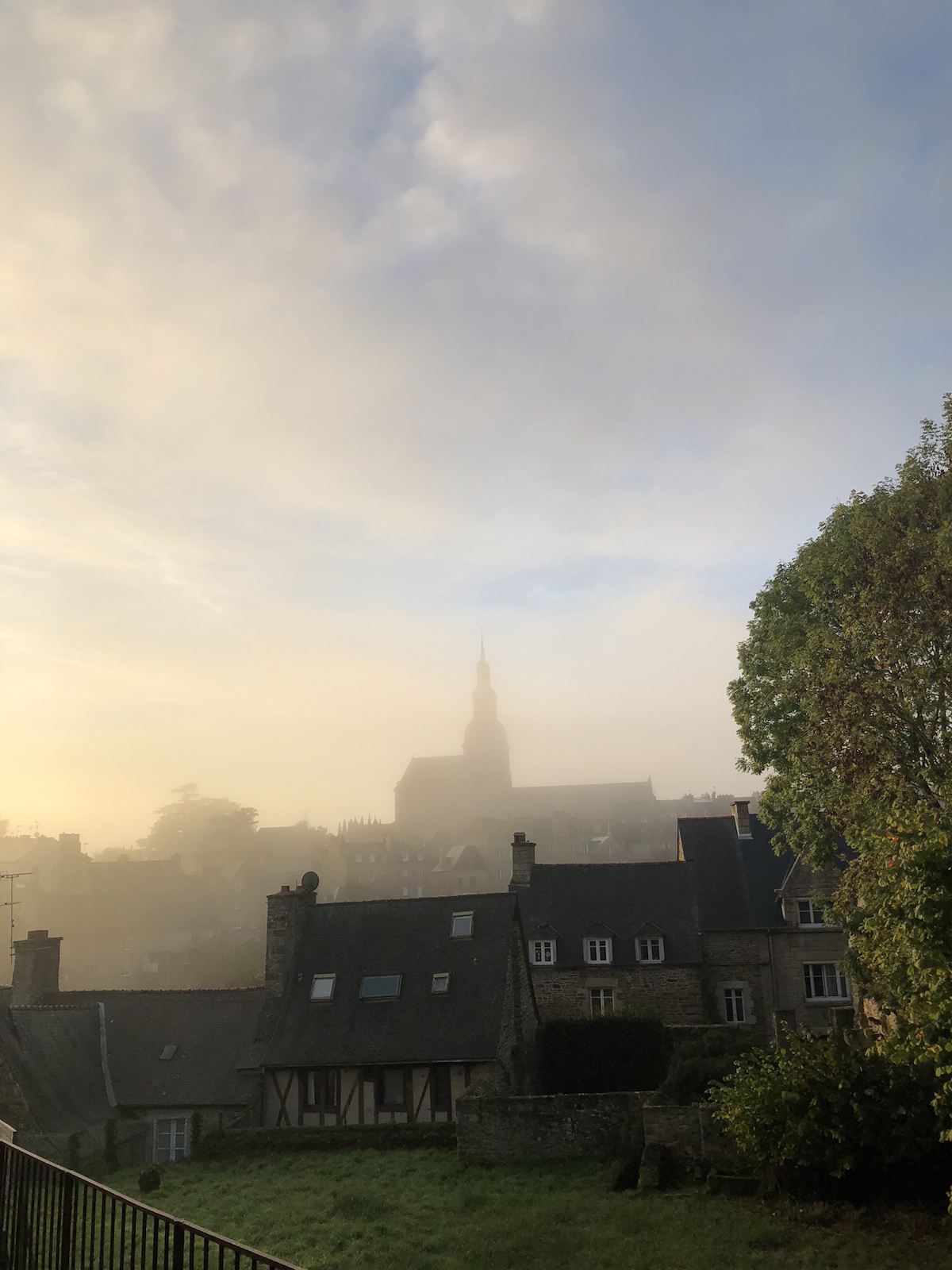
JOURNAL
documenting
&
discovering joyful things
Kind Noël
Brightly shone the moon that night
Though the frost was cruel
When a poor man came in sight
Gath'ring winter fuel
It’s nearly Christmas, and I’ve been singing Good King Wenceslas in my head all morning. It’s one of my favourite carols: I love the tune, but also the story of kindness and generosity that it tells (and also this scene in Love, Actually).
Of course we could all benefit from practising random acts of kindness, Wenceslas style, at any time of the year. But at Christmas, when we are simultaneously stressed and frazzled but also trying to practise goodwill to all men (and women), it’s nice to be reminded that little acts of kindness can make a bit difference to someone’s day.
With that in mind, I’ve been making a list of ‘random acts of kindnesses’ that I could keep in mind for inspiration at this time of year…
Give up my spot in line to someone at the shops
Pay for the coffee of the person behind me in line at a cafe
Donate to a charity I care about, or volunteer if I have the time
Leave some anonymous Christmas gifts in the letter-boxes of our neighbours (eg. little cards, handmade ornaments, posies from the garden, etc)
Offer to help an elderly neighbour mow the lawn (or shovel snow), put up Christmas lights, walk the dog
Host a casual dinner party or afternoon drinks for friends, and tell them I appreciate them
If I see someone struggling with heavy bags, offer to help carry them
Buy a round of drinks for people in the table next to us if my kids are noisy
Bake something tasty and bring it to the office
Call or text a friend and tell them five things I really admire about them
Leave a thank-you note for a shopkeeper or waiter who is kind to me
Do a toy cull / book cull / crockery cull / clothes cull and give them to charity
Candy-cane bomb a parking lot, like this
Take three for the sea (pick up and bin three pieces of litter I see when I am out)
Write a letter to someone I love
The next time someone annoys me by knocking on my door or stopping me on a busy street to ask me to give to charity, I’ll make a small donation (because the cause is good, and that person has to have one of the world’s most thankless jobs)
I’m sure this list only just scrapes the surface. What ‘random acts of kindness’ do you practise or suggest (or have you experienced) at this time of year?
Frequently asked
I thought it was about time I answered the questions I receive the most, somewhere that they could all be found in one place. Have I missed something you’d like to know? Feel free to ask away in the comments, and I promise to reply.
Here we go…
How do you get watercolours to show up brightly on brown kraft paper?
The secret is they’re not just watercolours. I also use gouache paints, which look and feel pretty much the same, but are chalkier in consistency, and brighter and more opaque on the paper. Back in the old days, poster artists often worked in gouache. I mix my gouache and watercolour paints together within my images (and often combine them with one another to create the exact colour and consistency I want).
What pens do you use in your artwork?
I use fine-line archival ink pens for outlines and details in my paintings, and to write the addresses in my mail-art. The ink is waterproof, so it doesn’t run with the paints. My favourites are these Sakura Pigma Micron pens, and I have a collection of nib sizes that range from 005 (very fine for detailed work) to 05 (thick and bold, good for addresses).
Where can I find likeminded pen-pals?
There are loads of places to find people to write to. Pen-pal groups, yes, but also other projects and programs through which you can brighten someone’s day with a handwritten letter. I shared a list of some of my ideas for the show notes of this podcast episode with Tea & Tattle (scroll to the bottom of the show notes to find the list). I also teach about finding like-minded people to write to (and people who will write back) in my letter-writing e-course.
What camera do you use on your blog and Instagram?
To be honest, 99 percent of my photographs these days are taken using my iPhone. I have a DSLR Olympus PEN camera that I love, and it definitely takes better pictures, but the reality is that I can’t always carry it with me everywhere I go. The iPhone lets me capture small surprises and spontaneous moments in my day, no matter where I am.
Whats happening with the Meals in the Mail project?
Ahhh, that project. Meals in the Mail remains one of the favourite projects I’ve ever run. Here’s where it’s at: at the start, I promised to turn all the recipes into a book, but I received more than 250 letters (after expecting 20-50). To share the recipes, mail-art and stories in this way would make for a book that was around 750 pages long, which would be as unwieldy and impractical as it would be impossibly expensive, so I had to rethink.
I dabbled with the idea of giving the project its own blog instead, but that felt flat to me, and didn’t do these wonderful letters justice. So right now I am in the midst of making the recipes myself, one at a time, and talking to the makers about their food and the stories that make them special, for a podcast project. I can’t wait to share when it’s ready.
When will your snail-mail book come out?
Soon! The copy is finished and edited, the cover is done, and the design is in place. I am finalising some extra illustrations needed, and then it’s off to print. More about this book here.
How do you find the time for all your creative projects?
I could be glib and say there’s never enough time, and that’s certainly true to an extent. I’m definitely not as productive as I’d like to be (case in point the snail-mail book above, which has been in progress for more than four years!). But I do have some tips for finding or making time to be creative, or maximising the little bit of time we have. I’ve put them all into a little e-book called “Time to Make,” which you can download for free when you subscribe to my newsletter (which you can do here).
How can I do more with my creative ideas / start selling my creative work?
I teach all of my knowledge on the personal aspects of creativity (creative block, perfectionism, confidence, time, those sorts of things) in my hybrid coaching and e-course, Create With Confidence which runs once a year. For people who want help going public to share or sell their creative work I have a self-paced course called the Sales & Social Masterclass for Makers, which you can join at any time. I also share tips for free in my newsletter, and am happy to answer your questions via email.
Why and how did you come to spend so much time in France?
Think of that self-imposed sabbatical as me cashing in my ‘holiday savings’ after seven years of not stopping. The idea was my husband’s, after he knew he’d be heading to Italy for work in 2018, and thought that if the children and I were nearby we could all meet up.
We chose to stay in Brittany in France because that’s my family background on my father’s side, and we wanted the children to learn a little of the language and culture that was part of their heritage. At ages four and six, with Scout only in her first year of school, it was an ideal time to travel, before missing so much school became a problem.
I am lucky that I work from home, so I didn’t need to take leave from any bosses. I worked ridiculous hours in the lead-up to the trip, which in retrospect wasn’t the healthiest of ways to save money (ever heard of just “not spending,” Naomi?) but even so, we will be probably be paying off the debts incurred during this time for quite a while.
It was worth it.
That’s it from me for now. As I said, please feel free to ask me anything I haven’t covered yet here. Or (better still), tell me about you! What do you love, make, do, feel?
Brocéliande
Do you believe in magic?
I do, now.
I believe in the magic of forest paths that lead to unknown places, and ancient oak-trees with roots that reach so far into the earth that they touch history.
I believe in the magic of red-and-gold leaves that fall like rain, the crunch of them underfoot, and the sound of wind like whispered promises. I believe in the magic of afternoon light that is actually gold, mist in the morning like a blanket, and the smell of woodsmoke in the air.
Of mulled wine and hot chocolate, sipped in cafes with fogged-up windows and friendly strangers. The call of owls in the night, carrying across still water.
I believe in the magic of standing in a place of legends, the very spot where, at some point in the 5th Century AD, a Briton named Arthur once spearheaded a resistance against invaders from the north, and inspired more than a thousand years of stories.
Stories of love, of betrayal, of heroics, of swords, and stones, of witches, and warlocks, of knights, of round tables, of grails, and of kingdoms that unite and endure.
And of a lady in a still and silent lake.
Ode to writing letters, and cauliflower soup
I’m not going to deny it’s cold out there. The children race ahead of me to the playground, seemly oblivious to the biting wind, and the fact that there are scratches of frost amid the remnants of last night’s rain on the monkey-bars and the spinning tourniquet.
Their games start almost immediately and, to the soundtrack of their laughter, I find a section of bench that is seeing sun (or that might possibly see sun one day). I bring a little towel with me so that I can dry a space to sit down, and then pull out a note-pad and a pen, and ease my gloves off, one finger at a time.
And now, while the children swing and slide and leap and spin, I write letters. I write to strangers, I write to friends. I write to family, I write to my children’s teachers, I write to Instagrammers and podcasters I admire. I write about the produce I found at the market, about walks we take in the woods, about books I’m reading, cakes I’m baking, dreams I’m dreaming, and about the way time runs at a different pace in France.
I write until my fingers turn red from the cold, and then blue, and then wrinkle until they look twice my age. The children race past me, shrieking with laughter during some great game or another. I blow on my fingers, I shake them out, and then I write some more.
Later when we are home, I pull out the pencils and paints. Trace around my trusty wooden envelope-template, and make up designs that I think people will enjoy, inspired by the world around me right now. A café in Paris where we drank hot chocolate and ate croissants. Sunflowers that I’d picked up at the market in London two days earlier. A castle in Bretagne. The picnic we enjoyed in summer at the ruins. Rosehips from the basket-full I picked from the hedgerows, the swan we admired in St James’ Park, my mother’s vegetable garden.
When I’m done, I fold each painting into an envelope that will carry these tiny moments and stories from our lives along highways and past mountains, across bridges and over oceans. From autumn to winter, or spring, or rainy-season, or dry. To vast cities and country villages, rural outposts and marshy islands.
All for the low, low price of two euros.
Sitting in the cold playground and writing these letters, these long, rambling spillings-out of my days, feels like I’m returning to my roots. It’s not that I ever stopped writing letters, but the luxury of time to write in this way isn’t something I’ve given myself in many years. (Note that I say “given myself” rather than “been given,” because too many times I’ve claimed not to have time when, in reality it was simply that I chose to spend my time in other ways).
I’ve heard it said, and in fact I talk about it in my letter-writing course, that writing something down by hand (rather than typing) aids the memory. It’s something called “reflective functioning.” We feel the event or experience all over again as we write it down, and then reflect on it and make sense of it as we read it back. Perhaps by writing down the seemingly mundane but often precious moments of my days, I am helping to commit them to memory and heart, my letters becoming an act of mindfulness and gratitude, appreciation for the littlest of things that bring joy.
But I sometimes wonder if, in not only writing these things down but also sharing them with someone else, I am doing more than committing them to memory. Maybe I am giving them lives of their own.
What if, upon reading of the intricate romanesco broccoli I picked up at the market on Thursday, my correspondent is inspired to make her famous roasted cauliflower soup, and invites friends over to share it? The conversation and laughter last well into the night, and it is a simple experience of friendship and hygge. That wasn’t my letter, but maybe a letter could spark such a thing?
This is the power of words shared. They don’t stop on the page and, from the moment we drop our letters into that post-box, they no longer belong to us. To me this is a beautiful thing, and the fact that I can never know if or what my letter might spark in someone else does not make the imagining any less joyful.
The truth about what happens on our walks
Chevalier Ralph clambered up onto the rocks by the path, to his look-out. “Can you see the advance guard?” the Warrior Queen Scout called up to him, “Are they close yet?”
We all peered through the forest trees and across the canal, to the hiking trail on the other side. Two retirees carrying trekking poles were striding along the path. “I see them!” yelled Chevalier Ralph. “They’re almost ahead of us!”
And then at the same time, both children looked further into the distance, and stiffened. A walking group of about 20 more retirees had rounded the corner of the path across the river, behind their two ‘advance guard’ friends.
“The pack! The pack of oldie chevaliers!” the children yelled, in mock terror. “Run!” And so we ran, a mad race to the old castle ruin, us on one side of the river and our unwitting enemies on the other.
We were two chevaliers and one warrior queen, you see, and we alone knew of a plan by our arch enemies to attack our castle. They intended to sneak up on the castle, cunningly disguised as an innocent-looking walking-party of octogenarians, then storm our walls and take the kingdom.
Luckily, we happened upon them during our walk. Now it was up to us to get to the castle before them, and save the day.
We raced along the forest path, past the ancient abbey with scarcely a glance, and scrambled up the steep hill to our fortress, all the while listening for the sound of deceptively-benign conversations about chestnuts and knitting and grandchildren.
Once there, we pulled up the imaginary draw-bridge, locked the non-existent gates, and armed the crumbling battlements. Hastily (there was no time to lose!), we reached into my backpack and added to our number: the castle was now under the protection of Chevalier Ralph, Chevalier Mummy and the Warrior Queen, as well as a soft toy Lightning McQueen, another soft toy Harry Potter, and a little plastic dog from Paw Patrol, called Chase.
The toy chevaliers protected the most vulnerable aspect of the walls, overlooking the valley, while the three of us checked every other side, craning our necks for enemies disguised as grandparents. We sent messages via carrier pigeon to the next town over, warning them of imminent attack.
At this point the Warrior Queen decided she was no warrior after all, but just a plain old queen who needed protecting. After about five minutes of that she found that being helpless was boring, and so miraculously developed the powers of flight. A man wielding a leaf-blower in the village below was actually a dragon, roaring with fury and spewing dust and leaves.
Chevalier Ralph stopped bing a chevalier and became instead a superhero, by the name of SuperBoy. As we headed to the neighbouring village, we had to stop multiple times for SuperBoy to throw stones into the canal, as this was the only way to recharge his waning superpowers.
Soon after this, the adventure grew so complex that it is impossible to explain. Suffice to say we won the day, both sides of the war agreed to make friends, and we celebrated with chocolate eclairs and raspberry tarts on the way home.
All the light we see
As the days grow shorter I find I am following the light around our little apartment, seeking moments of calm in a sun that illuminates but does not burn. In the afternoon, the light slants through the dormer windows and over the table where I paint, creating patterns and shadows that are as real as they are transient, and breathtakingly beautiful.
I sit by the window and make notes in the little ‘field notes’ notebook with a blackbird the cover that I picked up at the Horniman Museum gift shop when we were in London in September. As for so many other people at this time of year (maybe you?), my thoughts are turning to introspection, a kind of ‘life stocktake of 2018’, if you like, alongside all my hopes, dreams and plans for 2019.
When it comes to ‘hopes, dreams and plans’, the key challenge I find is deciding where to put my energy. I have been guilty (and I’m sure I’m not alone here!) of taking on way too much. And as I don’t like to do anything half-hearted, I throw myself into all the things and all too often end up exhausted, burnt out, and unable to be present for my family in the way I want to be.
Do you relate?
Certainly, the first half of this year looked like that, but this extended stay in France has helped give me the mental white-space I’ve needed to see things with a little more clarity.
For example, with the clarity of emotional distance, I can look on our French sojourn as the cumulation of all those missed holidays and breaks. Aside from one week in Tasmania 18 months ago, I have not taken a break since I fell pregnant with my daughter in 2011. I worked up until the day before both of my children were born, and was back at work when my daughter was only six weeks old, and my son only three weeks old.
Of course, I work from home, so it’s not as though I’ve been in the office for all that time, and my hours equate to part time. But working from home means it’s almost more difficult to switch off, and the lines between work and family blur even further. And the rest of the time is taken up with those not-insigificant hours of cleaning, cooking, administering and nurturing to my little family. As much as I enjoy work and parenting none of it feels like a break!
This stay in France has been like a recuperation period, a chance to finally stop and rest and reflect and play. If I’d been sensible and taken two or three weeks a year during the past six years for holidays, they would have added up to the same amount of time out, but maybe just maybe, I could have avoided the sense of overload and overwhelm I’d been experiencing in the lead-up to this trip. (I suspect there’s a lesson in there for me somewhere.)
So now I sit by the window in the weakening light and sip my tea, and make notes in my blackbird notebook. Everything I’ve been doing, work-wise, this year. What’s working for me, and what isn’t. What feeds my soul and supports my family, and what detracts from soul or family (or both).
And I write down all those plans. So many creative dreams, all of which I am eager to sink my teeth into. Finally releasing that snail-mail book. A podcast about meals in the mail. Another colouring book. An illustrated year-book. A collaboration on sustainability that I’ve been invited to take on. A charity cook-book. Weekend intensive workshops for students. Postcard and zine projects. Stationery kits. Seed packets. Finally learning pottery. And how to crochet.
My first instinct is to take on ALL the plans, and pile them on top of everything I’m already doing. But in the calm and quiet sunshine of this much-needed time out, I can see more clearly. Looking down at that notebook, I can see projects that I loved this year but that didn’t serve me or my family. I can see creative ideas that I know I’ll love but that won’t serve us in 2019.
Slowly, I am paring back and choosing favourites… and choosing health and family and joy as well as, well, sheer productivity.
It’s easy to see a holiday as a great indulgence. Maybe it’s a vestige of the Protestant Work Ethic, but both my husband and I find it hard to stop. If one of us doesn’t work at night after dinner, the other one exclaims in surprise, “Oh! No work tonight!” and within the celebration of freedom there’s also an unspoken undercurrent of, “Must be nice to lead such a leisurely life.”
It’s time to reset. We both need to stop glorifying ‘being busy’.
Instead, I want to structure my days like the farmers of old. Work hard all day. Stop for a proper lunch to gain sustenance and energy for the afternoon ahead. After dinner, enjoy a well-earned rest: read a book, paint, watch TV, play board-games, write letters, crochet… in other words, leisure. Earmark at least one day each weekend for family and no work.
And once a year, while the earth sleeps (aka quieter times at work), take a break. Nothing necessarily as grand or expensive as an overseas trip (although wouldn’t that be lovely!), but ensure a deliberate, physical separation from work and obligations, to rest and reset.
These thoughts are all scribbled down in my notebook, in jumbles and pieces side-by-side with shopping lists and plant-doodles and wifi keys from the various places we’ve stayed. As I read over them before the light fades, I realise I may be making changes in 2019, bigger than I’d anticipated, pivoting again. And it feels good to finally begin to see.
Just one thing: the inconvenience of saying no
Last year, I started writing intermittent blog posts about how I was trying to do “just one thing” to live in a more sustainable way, and take better care of our planet.
The idea of “just one thing” came about because the whole problem just seemed too big, and overwhelming, to navigate as a whole. Especially once I started to learn that recycling wasn’t the magic cure-all we had once believed it would be, and that the resources required to recycle our waste were enormous and (ironically) mostly-unsustainable.
So, rather than trying to fix everything at once, I tried doing one small thing at a time and, once that thing became habit, I started doing something else.
As time went by, I was proud to find that our previously-overflowing bin would go out each week with a lid that could actually close. I realise that’s not a big step for some people (in fact a full bin is worst-case, not best-case, for a lot of families), but it was a big achievement for us.
But one thing I’ve come to realise is just how much of what we buy comes in packaging that I then need to toss or recycle, so that bin does keep on filling up despite everything I’ve been doing. Right now, I’m just not in a place to be able to make all our own cosmetics and toiletries, for example, and store them in pretty glass jars, or repurpose our old tuna tins into bookends. But every time I buy these things, the packaging ends up in recycling or landfill.
You know the stuff I’m talking about: in the bathroom, we have toothpaste, deodorant, moisturisers, cleansers, shampoo, conditioner, body-wash, hand-soap, hand-cream, sunscreen, lip-salve, and all kinds of other rubs and scrubs. If you come with me into the office, there are glue-sticks and plastic pens and boxes of staples and bulldog-clips, all my paint tubes, plastic document-sleeves, printer ink cartridges, and on it goes. Under the kitchen sink, I do use bicarbonate of soda and vinegar for a lot of my cleaning, but you’ll still find washing up detergent, washing up gloves, and an enormous array of chemicals in liquid form that do all kinds of damaging things to our planet, stored in plastic containers.
It’s heartbreaking!
I think that our extended stay in France has really hammered home to me the extent of our household waste. First of all, because when we first arrived here, I had to buy just about everything from scratch. Cleaning supplies, hygiene supplies, and all those pantry-staples like oil and flour and rice… I had to buy all of them, and they all came in packaging. Secondly, we don’t have any compost in this apartment, and the only recycling is glass. So every day I can actually see all that cardboard and plastic I’m using. I still separate it out - old habits die hard - but then it all goes into the one big bin outside.
But by separating out the cardboard and plastic, and then throwing it all into landfill, I have been inadvertently sending myself a powerful message. I can actually see all of these things I am bringing into my home. Back in Australia, I toss them straight into the recycling, and they are much more easily forgotten.
And this brings me to my “just one thing” for today: saying no, even when it is inconvenient.
I don't really have the answer, just yet, and if you have any experience of this, I’d love your help! But I guess what I want to talk about today is being mindful not only of what we do with our waste once it becomes waste, but of what we bring into the house in the first place.
For example:
Could I buy less food, so we don’t throw out as much? (Could we get better, as a family, at eating leftovers even if we don’t feel like eating that again today?)
Could I buy more in bulk so that even if the container is plastic, it’s only one instead of five?
Could I do without some things from the supermarket, and wait until market day so that I can pick them up without packaging?
Earlier this year our family supported this successful crowd-funding initiative for reusable, glass bottles for our milk so, when we return to Australia, I’ll need to get good at picking up and returning our bottles from specific places
Could I get better and bringing my own containers to the butcher and tell them not to put my meat in any plastic or wax paper?
Could I bring my containers to the green-grocer and give them back the plastic containers for cherry-tomatoes and berries? Or if they can’t take back the containers, could I suck it up and just not buy cherry tomatoes or berries until I can get them from the market?
Could I bring my empty egg-containers back to the green-grocers, just as I do at the markets?
Confession: when I started writing this blog post this morning, I was thinking, “this one thing is too hard. I don’t have any good answers.” But as I’ve listed the ideas and questions above, I realise I was simply feeling overwhelmed. I know my ideas won’t solve everything, but surely they are better than doing nothing! All I need to do is be willing to accept a tiny bit of inconvenience in order to keep making the changes I so badly want.
I’d really love to hear what you do - I’m sure there are loads of things I haven’t considered!
Some other ideas
In the meantime, following are some of the other actions I have gradually been taking during the past few years to help reduce my footprint on this planet.
I share this list here in case it inspires you, or gives you ideas, but I do want to add in the caveat that I am doing these things one thing at a time, not always successfully and often with stops, starts and backslides. If you are new to the journey of sustainable living and this all seems overwhelming, I hear you! I encourage you to be kind to yourself, and to consider trying just one thing, either from this list or something else. (I’ve included a “how it helps” hint at each of the steps I’m sharing below, so you can see how even one little change in our lifestyles can make a big difference.)
On the other hand, maybe you are way ahead and have loads of other great ideas for how we can do “just one thing” to care for this planet a more mindful way. I’d really love to hear what you are doing, in the comments so everyone reading can benefit from what you’ve learned.
We each have to walk our own paths according to our own beliefs, budgets, family circumstances, family pushback to making changes (!), available time… so I guess I just want to say that there is zero judgement here (and honestly, very limited success on my part), and all I hope is that this list will kick-start ideas or conversations. OK, here’s where I’m at so far:
Taking my own carry-bags shopping, instead of accepting plastic bags. At first I forgot a lot, but now it’s habit. (How it makes a difference: if everyone in Australia refused just ONE plastic bag at the supermarket, there would be 24.6 million less plastic bags that go into landfill)
Seeking composting solutions that work even though we only have a tiny garden. So far I’ve really liked this composting cannon, but I’m considering upgrading to something that will accept more of our organic household waste. (How it helps: I am guilty of previously thinking, “Oh, but food waste breaks down, so it’s fine.” Turns out, food waste creates methane gas, which is 25 times more damaging to the environment than carbon dioxide. If everyone in Australia composted only 10 percent of their uneaten food, we’d be keeping 330,000 tonnes of rotting, gas-producing waste out of landfill)
Using reusable cups for my take-away coffee (or in France, only drinking coffee at cafes). I have an assortment of reusable cups at home: the classic reinforced glass cup, one that’s a thermos inside so my coffee stays hot for longer, and a beautiful stoneware mug with a removable lid. (How it makes a difference: reduces landfill and resource-waste. Despite ‘feeling’ like cardboard, more than 99 percent of disposable coffee cups are not recycled because of the plastic lining that makes them heat- and moisture-proof)
Replacing my use of soft plastic, like cling-wrap, with reusable beeswax wraps. I use them to cover bowls in the ‘fridge, keep cheese fresh, wrap up sandwiches for picnics and lunch boxes… they are great for practically anything, as long as you don’t use them with meat (because they can only be wiped down to clean) or anything hot (because beeswax melts!). (How it makes a difference: cling-film goes into landfill and recently I read that more than 1.2 billion metres of cling film was being used by households in Britain alone, every year, enough to circumnavigate the entire planet 30 times over)
Stop buying bottles of sparkling water. We did buy a soda-stream instead, but basically we have taught ourselves to drink still tap-water at home. (Groundbreaking, I know. What ridiculously privileged lives we lead!) I also carry a lovely, reusable drink bottle with me when I’m out and about, so I never have to buy bottled water for myself or the kids. (How it helps: every minute, one million single-use plastic bottles are purchased around the world. There are more than five billion adults on our planet - if only 1 percent of us said no to one plastic bottle each, there would be 50 million less of them polluting our planet)
Using stainless-steel, reusable straws at home, and refusing straws when out and about in pubs or cafes. (How it makes a difference: every year in Australia, we use and throw away 540 million straws in our pubs, more than 310 million straws in McDonald’s restaurants, and countless more in other cafes, restaurants, food courts, cinemas, sporting grounds, schools, hospitals, parties and homes. Straws are so small they slip through recycling, and end up in landfill or polluting our waterways, causing the kind of suffering to wildlife that made this heartbreaking video go viral)
Reducing the amount of plastic containers I use in the home. Bit by bit (because replacing plastic is expensive!) I have been swapping our plastic kids’ plates, party plates and picnic-ware for enamelware, and collecting food containers made from reinforced glass. As a more affordable solution, I’m also very partial to storing up old biscuit tins to hold everything from home-made cakes to pasta and first aid supplies. (How it makes a difference: businesses buy what we demand. If we stop buying plastic, companies will stop making it)
Replacing our laundry detergent with soap nuts (I wrote about that change here). (How it helps: most conventional laundry detergents contain chemicals like sulphites, phenols and fragrances, which all end up in our waterways and next to our bodies. They also come in plastic or cardboard containers, which either go into landfill or have to be recycled,further taxing resources)
UPDATE: If you are seeking extra inspiration, just after posting this I discovered that my lovely online friend and a food writer I deeply admire, Sally Prosser, had also written this useful post on 10 ways to use less plastic.
Listening & noticing
We first noticed it on a Saturday night at the beginning of September: the unnatural quiet.
We were returning from the playground, where the children had spent a rousing hour-and-a-half making friends via a game of Ralph’s invention. It involved tossing his soft car-toy into the midst of a group of children who were spinning at top speed on a merry-go-round. If they managed to catch it, they’d toss it back, causing gales of laughter as Ralph ran hither and thither to pick it up like an eager puppy. Over time, the game evolved into chasings, with everyone chasing the one person who held the car, which they’d then pass to someone else if the mob of children got too near. A bit like under-six football, only with a lot less rules.
The children’s French language skills are coming along swimmingly, too. Mid-way through the game Ralph took a break in order to run up and tell me, “A girl said ‘bonjour’ to me, so I said ‘bonjour’ back.”
So, practically fluent.
We left the playground and sat down at a table outside a restaurant in the heart of town. I ordered us a tuna salad to share, and a glass of wine for me, and leaned back to enjoy the evening. That’s when I noticed it: the quiet. The town, which we had left two hours earlier bustling with the now-familiar throngs of thousands of tourists, buskers, market stalls and families, was now all-but empty. Two old men at a table nearby, smoking over pastis. The woman from the Presse across the square, leaning in the doorframe of her shop and watching the dusk. An old English sheepdog, asleep on the flagstones.
That was pretty much it, other than us, and it felt uncanny, to say the least. I said as much to the woman who brought us our salad. “Oui,” she said, her face widening into a broad smile, “c’est tres tranquil!” (“Yes, it’s very quiet!”). In the space of one afternoon, the school holidays had ended, and the crowds had melted away like mist in the sun. Now, I thought to myself, I am about to discover what life is really like in the village.
And one great lesson I am learning from life in this village, now that tourist-season has closed, is that there is a time and a season for everything, if only we learn to listen for it.
At first this felt restrictive because, in Australia, we are used to doing all the things, all the time. We eat when we can (hungry or not), and often on the go. We work all the time. Early morning. Late nights. Weekends. My husband brings his computer, iPad and telephone with him on holidays. We do our shopping at odd hours, slotting it around our long days. Pick up this on the way home from the office, grab that on the way home from school, shop for those at 9pm on a Sunday night, and order the rest online at 1am on a Tuesday after finishing a deadline.
I get my coffee take-away and eat at my desk, and our mealtimes are likewise scattered. For breakfast, Mr B grabs a banana for the car and snacks at work when he gets hungry. Often I forget to eat lunch and then pick at unhealthy anythings scavenged from the pantry all afternoon. I feed the kids their dinner and put them into bed, and then by the time Mr B gets home from work I’m often too tired to cook again. We are keeping Uber Eats in business.
By comparison, this is our life in the village:
* The church bells ring at seven in the morning. They don’t start earlier and the inference is, what person in their right mind would get up before seven in the morning anyway?
* On church-service days (including weddings and funerals), the bells start ringing 12 minutes before the hour, and continue all the way up until the hour, to give everyone in the village time to get to church
* The markets run from eight until one on Thursday, and that’s where everyone in town stocks up on fresh fruit, vegetables, meats, fish, cheeses and spices for the week. It’s seasonal, and you just have to roll with what’s growing (no California oranges or New Zealand kiwis here)
* The cafés and restaurants open at noon until about two for lunch, and seven until nine for dinner. Outside those hours most are closed and even if they do open, you can only get drinks
* I’ve yet to see a take-away coffee cup
* The shops don’t open before ten each day, and they are closed on Sundays and Mondays. “Sundays are family days,” my friend told me, with an expressive gallic shrug that seemed to add, “naturally”
As you can imagine, we came unstuck at first. I used up the last of our milk on a Saturday night and shock! horror! Had to wait until after ten on Tuesday morning to buy more for my tea. More than once, I failed to buy enough fruit and vegetables at the markets and had to go without for the rest of the week. (Going without is better than facing the prospect of picking through the genuinely-rotting ‘fresh’ produce in the local supermarket to find something edible. I’m not kidding: if the supermarket was a cartoon, there’d be little wiggly smell-lines wafting above it).
When we first arrived, my kids’ little tummies were used to having lunch at eleven or thereabouts, and we roamed fruitlessly from café to café, searching for something that was open before noon. We had the same problem when I wanted to take them out for dinner, but nobody would serve food until after their bed-times.
But as time has gone by we have slowly adjusted to these new rhythms and, somehow, they are beginning to make profound sense.
I take menu inspiration from what’s fresh at the market, rather than arriving at the supermarket with a ready-made list and very little idea of where my food is coming from. When it’s time for coffee, I take five minutes to sit at a cafe and people-watch while I sip, noticing and appreciating the taste… and the moment of peace.
Mealtimes are for proper meals, and we enjoy them thoroughly. But when mealtimes are over, we stop eating. I don’t snack any more, and I’m noticing the difference to my waistline. Sundays, when all the shops are closed, are for big cook-ups for the week ahead… or for long walks and picnics if the weather is just too good to resist.
It feels as though we are training our bodies to notice the rising and setting of the sun, the rhythms of the harvest, the turning of the globe and the changing of the seasons.
I am storing these life-lessons away, tucking them into my suitcase alongside the souvenir biscuit tins, vintage ceramic jelly mould and new winter coat that I also picked up here in France, in the hopes that they can be woven into my daily life when we return to Australia.
One day in Paris (with small children)
Brace yourself: your day will probably have to start with the Paris Metro. Hold on tight to their hands, try not to inhale too deeply, and, if it’s peak hour, leave enough time to allow a few over-crowded trains to go by before you venture on in (here is a fun guide to surviving the metro in Paris).
Be a tourist
Take the Metro to somewhere close to a tourist attraction. I know, I know, you’re cooler than that. You want to explore off-the-beaten track alleyways and hole-in-the-wall one-dish-only Michelin star restaurants only Parisians know about. But you only have one day, and you are travelling with small children. There’ll be places they’ve seen in movies or read about in books that they are just desperate to visit. My friend, you are going to the Eiffel Tower!
The goal is that you emerge from the dark, smelly Metro-cesspit and watch your kids’ eyes grow wide and hear them breathe “Wow!” as the true beauty of Paris rises all around them. That “Wow” is worth a thousand super-cool secret bars, trust me.
Depending on which part of the city you’re staying in (i.e. the most convenient Metro lines to you), you could aim for any of these Metro stations:
To see Notre Dame first: get off at Saint-Michel Notre Dame (RER lines B or C), or Cité (pinkish-purple line)
To see the Louvre Museum first: get off at Louvre Rivoli or Palais Royal Musée du Louvre (yellow line), or Chatelet Les Halles (RER line A)
To see the Eiffel Tower first: get off at Champ de Mars/Tour Eiffel (RER line C)
To see the Arc de Triomphe first: get off at Charles de Gaulle Etoile (yellow, blue or aqua lines, or RER line A)
To see the Opéra Garnier first: get off at Opera (olive, pink or purple lines), Chausée d’Antin La Fayette (pink or lime lines), or Auber (RER line A)
To see the Tuileries garden and Place de la Concorde first: get off at Tuileries (yellow line)
Buy a croissant
Get yourself out of that Metro station, and look around. Wherever it is you emerge, it’s a fair bet it will be beautiful! Let the kids stretch their legs, and take a ramble over and around wherever it is you’ve decided to start. (For my kids, this means racing around the forecourt at The Louvre).
Now find a nearby cafe and prepare to overpay outrageously for a coffee and a croissant. It’s worth it. The kids are hungry, and you’re in Paris. Order them a pain au chocolat and they will be over the moon. (Remember to use the loos here because you’re going to hit the road again soon).
Hop on a bus
Look around for a hop-on-hop-off bus and buy yourself a day ticket. These buses are a fantastic way to look around a city if you don’t have much time. They hit all the top tourist destinations and the name pretty much says it all: you can hop on or off all day, using these buses to make your way around the city.
If you’ve emerged at any of the places I listed above, a hop-on-hop-off bus will be nearby, so just grab the next one: this is how you’re going to get around for the rest of the day. Sit upstairs if the weather is fine.
Especially if your children are quite young, the hop-on-hop-off bus will work with their moods. Do their little legs need a rest? Hop on the bus and drive around, seeing the sights while giving them a break (bring snacks if you need to). Are they growing restless? Jump off at the next stop and let them explore - another bus will be along whenever you need it to continue on your journey.
Let the kids set the itinerary
Now let the kids set the itinerary. As you drive past the bouquinistes (those green market-stalls along the Seine), tell them about the antique postcards and books and trinkets they can find there and, if they like the sound of that, get off at the next stop. If Notre Dame fascinates them, hop off there, then take a walk to Shakespeare and Company afterwards. Or if they are art-lovers, hop off at the Musee d’Orsay and visit all those lovely impressionists. (Notre Dame tip: you can book online to climb to the top and skip the lines. Musee d’Orsay tip: book your tickets online to skip the queues).
Climb that tower
Let’s face it, assuming you do let the kids take charge, at some point or another today you are most likely going to the Eiffel Tower. (If you definitely know they’ll want to do this, try to make the Eiffel Tower your first stop, because the lines only get longer as the day goes on).
Hop off the bus, and prep the kids. Tell them that yes, they can climb it, but it is a long way up, and there’s no changing their minds half way. Would they prefer to take the lift? (If you like, you can buy a ticket that allows you to walk up to the first level, then take the lift to the second. You can choose to take the lift back down as well).
Half an hour later, ask incredulously, “Are you sure??” when your 4yo and 6yo declare that they want to climb both levels. Now moan and pant behind them as they set a cracking pace ahead of you, and you follow as best you can, carrying all the bags and coats they shed along the way. Have a tarte au pomme or a hot chocolate at the top. You’ve earned it.
(Let them buy that crappy Eiffel Tower snow-globe keyring. You are making memories.)
Take a break
When you need a break from exploring, hop off the bus near one of Paris’ many beautiful parks. Take a breather here, and let the kids race around if they need to, or lie in the grass and make shapes out of clouds if that’s more your speed. If the weather is hot, float a paper boat in a pond, or let them dance through sprinklers to cool off.
Optional extra: after receiving a thorough soaking from the sprinklers, allow them to treat you and half-a-million other tourists to a dance performance on the Trocadéro to dry off. (Oh yes, they did). Or bring a change of clothes.
Ride a carousel. Buy crepes from an outdoor vendor and eat them for lunch under a tree or beside the river.
Ice cream
Hop back on the bus, and visit as few or as many more sites as you want to. When you’ve had enough, hop back off at Notre Dame, and take a short walk along the Seine and over the bridge to the picturesque Ile St-Louis, to enjoy a cone of the best ice cream in Paris, from Berthillon. It’s seriously worth it. Sit in the gutter if you have to. You’re not shy.
Have dinner with the artists
How is your energy? Are all of you flagging? If you have the stamina (or if you have a spare morning the next day), take the Metro once again, up to Montmartre.
The closest stations are Abbesses (green line), Anvers (blue line) or Lamarck Caulaincourt (green line). If you’re not sure which way to go from the station, just head up hill. Depending on which direction you come from, you’ll either pass winding lanes with artists selling wares that spill out onto the sidewalk; or there’ll be buskers, hawkers, tricksters performing that old cup-and-coin trick, and way more pedestrians than cars. Each walk is equally fun.
At the base of Sacre Coeur is a carousel that (joy of joys!) has two levels. This will make your children very happy indeed. When they’re ready to leave it, take the funiculaire up to Sacre Coeur (go in or not depending on their interest - it’s the actual funiculaire that they will love, and the cost is a standard Metro ticket price).
Now walk around the corner to Place du Tertre for dinner. Choose one of the restaurants facing onto this lovely public square (once a favourite haunt of all your favourite artists) and order something delicious. I love moules-frites with a crisp rosé, but you do your thing.
There will be loads of amateur artists wandering around, offering to draw or paint or cut portraits of you and your little ones, and selling landscapes of all the places you have visited and admired today. I know, it’s cheesy, and the likeness is not exactly the best. But what a great memento of your day in Paris with your family, having your children immortalised forever in the style of a mid-century-mod portrait. You could take a wander around and pick up a souvenir for not too much if you like, or settle in for that dinner and let the artists come to you.
As dusk settles and the café lights come on, snuggle those tired kids onto your lap and ask them, “What was your favourite part of today?” They’ll tell you it was the ice cream, and the sprinklers. Stuff you could just as easily have done at home.
Trees and butterflies
We are searching out forests wherever we go, following paths that lead to unknown places. On this side of the world they are green and gloaming, not dry and dust-filled like the bush of my childhood. I like to kick my shoes off whenever I can, feeling the hum of the earth beneath my toes.
“Humph. Mum’s grounding again,” Scout complains. It is strangely liberating to remember, as I stand, that there are no deadly snakes or spiders lurking in the fallen leaves or hiding under rock and bush. Instead, we find…
conkers
chestnuts
blackberries, small and sweet
butterflies
crumbling ruins
whispering winds
acorns
wild apples
red-berried holly
rose-hips
(and once, something unseen that growled from behind brambles)
Inside these woods the fairytales I grew up reading seem much closer. It is easier to picture Hansel and Gretel or Little Red Riding Hood growing lost in these dark corridors, than in the brighter trees of my own remembering.
Of course, there is a hot, clean beauty to the Australian bush, too. The crunch of leaves and march of busy ants beneath my feet. The expansive shade of eucalyptus trees, whose baby leaves can be stretched and made to whistle a tune; bright flashes of bottle-brush in bloom; prehistoric, towering cathedral-ferns; and the eerie, dead-bone rattle of black wattle in the breeze.
Trees are trees and they love best to be together: when you find them gathered, on any side of the world, there is life and beauty to be found. But I am ever-drawn to these northern forests. I long for darker, cooler, deeper woods, and I hope I never quite unravel all of their mysteries.
I have a little theory that I like to play around with in my head sometimes, in that half-awake time in bed before sleep. It is undeveloped and unsubstantiated, truly just a theory, but I find it oddly comforting.
(I wonder if I subconsciously came up with this theory as a way of excusing or apologising to myself and my parents for not feeling more in love with the landscape and climate of my homeland, Australia. I have never felt properly at home in it. This seems unfair to a land that has given me so much, and that is so intrinsically beautiful, and I can’t explain it in any logical sense, which might explain the theory.)
It goes a little something like this…
Every year in autumn, millions of monarch butterflies fly thousands of kilometres south from the US-Canadian border to Mexico, only to head north again come spring-time. The fascinating thing is that given the life-span of a butterfly, five generations live and die in the interim. When it’s time to embark on their journey home, not a single butterfly alive has done it before. There is no-one to lead the way, not even anyone left to tell them about it. And yet their sense of direction is so accurate that every year they return no only to the same area, but often even to the very same tree that once was home to their great-great-great-grandparents.
The butterflies navigate by using a sophisticated combination of the sun’s position in the sky, and their own biological clocks. This is the idea of cellular memory, something deeper and more physical than our neurological memories: memories or associations that are imprinted, instead, into our very DNA.
If you speak to many Aboriginal or Torres Strait Islander Australians, you will hear something along similar lines, although often using different language. The land belongs to them and they belong to the land, and no amount of dispossession and destruction at the hands of us immigrants can change that deep reality.
But I am not Aboriginal or Torres Strait Islander, and I fear this hot and harsh and beautiful land does not belong to me, nor I to it. I am like a monarch butterfly, turning my antennae toward the homeland of my grandparents. Surely, in all the hundreds and thousands of years that my ancestors lived and loved on the other side of the world, right up until two generations ago… surely there is something of that in my DNA that could explain why I feel such a powerful and incessant longing to go north?
Or at least, that’s my theory.





